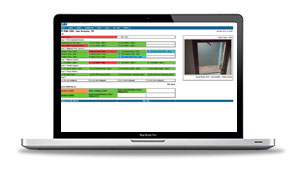 One of the most common causes of downtime is hardware failure resulting from exceeded temperature or humidity levels within the cabinet. In contrast—as the American Society of Heating, Refrigerating and Air-Conditioning Engineers (ASHRAE) recommends, as industry best practice, to maintain the appropriate temperature levels within the white space, as they have a strong correlation to the overall energy consumption within the data center.
One of the most common causes of downtime is hardware failure resulting from exceeded temperature or humidity levels within the cabinet. In contrast—as the American Society of Heating, Refrigerating and Air-Conditioning Engineers (ASHRAE) recommends, as industry best practice, to maintain the appropriate temperature levels within the white space, as they have a strong correlation to the overall energy consumption within the data center.
According to ASHRAE 2015 Thermal Guidelines, IT equipment of all classes should be maintained within a temperature range of 64.4-80.6ºF (18-27ºC) and relative humidity within the range of 40-60 percent. Also, the difference between inlet and outlet temperature should be within 35ºF (20ºC) and should not change more than 9ºF (5ºC) in any 15-minute period.
It is important to measure, and track inlet and outlet temperature and inlet humidity at each rack/cabinet in order to assure conditions are within ASHRAE recommended limits. A good strategy is to place a temperature and humidity probe near the top front and rear of each cabinet.
To optimize environmental monitoring in your cabinet ecosystem, consider the following when selecting an environmental monitoring solution:
- Remote temperature and humidity monitoring: Both inlet and outlet temperature and inlet humidity need to be monitored to ensure conditions are within ASHRAE recommended ranges, equipment specifications or your site requirements.
- Upper and lower thresholds and data logging: It's essential to have the ability to set an upper and lower threshold for temperature and humidity that prompts an automated alarm to technicians if conditions approach a limit.
- Integration with DCIM software: The ability to trend and plot temperature and humidity conditions can help visualize patterns, and identify root cause of out of bounds conditions. This helps operators recognize the need to move a workload or a piece of equipment to another rack, or indicates that airflow management is deficient in a particular rack.
Environmental monitoring is a key element of the CPI cabinet ecosystem solution. To learn more about the topic and all other elements of a successful data center cabinet ecosystem, download the complimentary white paper.
Brittany Mangan, Digital Content Specialist